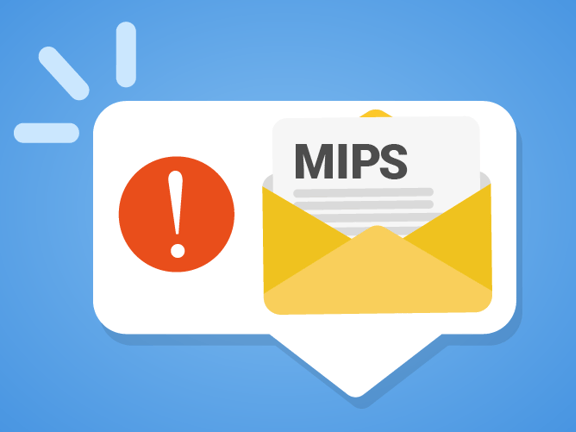Merit-Based Incentive Payment System for Rehab Providers: Eligibility and Reporting
February 10, 2025
7 min. read

The Merit-based Incentive Payment System (MIPS) is a Medicare payment model that ties reimbursement to quality and value-based care. Originally rolled out in 2017, MIPS brought significant changes for healthcare professionals, streamlining previous reporting programs and rewarding performance in areas like quality, cost, and technology use.
As of 2019, physical therapists (PTs), occupational therapists (OTs), and speech-language pathologists (SLPs) in private practice became eligible to participate in MIPS. Understanding how MIPS works—and when it applies—is important for therapy providers to stay compliant and identify opportunities for performance-based incentives. This article explains MIPS eligibility, performance categories, reporting expectations, and how therapy professionals can participate.
What Is the Merit-Based Incentive Payment System (MIPS)?
MIPS is one of two tracks under the Quality Payment Program (QPP) created by the Medicare Access and CHIP Reauthorization Act (MACRA). It consolidates components from three previous programs—the Physician Quality Reporting System (PQRS), the Value-Based Payment Modifier (VBPM), and the Electronic Health Record (EHR) Incentive Program—into a single, performance-based framework. MIPS also introduces a fourth category, Improvement Activities.
The goal is to shift Medicare payments from volume to value. Providers receive a MIPS final score based on performance in four categories. This score determines whether a provider receives a positive, neutral, or negative payment adjustment on future Medicare Part B reimbursements.
MIPS Eligibility for Therapists
Therapists became eligible clinicians under MIPS starting in 2019. However, eligibility is based on more than just credentials. To be required to participate in MIPS, therapy professionals must exceed all three low-volume thresholds during a defined determination period.
Low-volume thresholds (2024 performance year):
More than $90,000 in Medicare Part B allowed charges
More than 200 unique Medicare Part B patients
More than 200 covered professional services under the Medicare Physician Fee Schedule
If a therapist or group practice exceeds all three thresholds, MIPS participation is required. Those who meet one or two thresholds may voluntarily report or opt in, which allows for potential positive payment adjustments.
Private practice status is a key factor. Therapists who bill Medicare using the CMS-1500 form (typically used in private practice) are eligible. Those in institutional settings billing via the UB-04 form are excluded.
Example: A private physical therapist evaluates and treats 250 Medicare patients over the course of a year, billing over $100,000 in allowed charges and more than 300 covered services. This provider would be required to participate in MIPS.
Four MIPS Performance Categories
MIPS scoring is based on four weighted categories. The combined score determines future payment adjustments.
1. Quality (30% of total score in 2024)
Therapists select and report on up to six quality measures, including at least one outcome measure or high-priority alternative. These measures capture clinical effectiveness and patient-centered care.
Therapy-relevant examples include:
Functional outcome assessments
Pain interference measures
Measures must be reported with at least 75% completeness for all applicable patients, depending on the reporting method (claims or registry) .
2. Improvement Activities (15%)
This category focuses on activities that improve clinical practice, patient engagement, or care coordination. Small practices can earn full credit by completing one high-weighted or two medium-weighted activities.
Examples relevant to therapy settings:
Care plan sharing across disciplines
Use of patient-reported outcome tools
Expanded patient access via telehealth
3. Promoting Interoperability (25%)
This category does not currently apply to PTs, OTs, or SLPs, as most are not required to use certified EHR technology. CMS has excluded these clinicians from this category unless they voluntarily report.
4. Cost (30%)
CMS calculates this score automatically using administrative claims. While therapists have historically been excluded, they may be included in future years as CMS broadens cost attribution models.
Reporting Options for Therapists
Therapists can submit MIPS data through several channels:
Claims-based reporting: Limited to individual clinicians in small practices
Registry reporting: Through a qualified clinical data registry (QCDR) or qualified registry
Group reporting: Practices with two or more eligible clinicians under one TIN
Many therapy providers choose registries or third-party vendors for easier data tracking and submission.
Incentives and Penalties
MIPS uses a sliding scale to adjust Medicare payments based on a provider's performance score. For the 2024 performance year (impacting 2026 payments), the adjustment range is up to ±9% .
Score above the performance threshold: Positive payment adjustment (potential bonus)
Score at the threshold: Neutral adjustment
Score below the threshold: Negative payment adjustment
These adjustments are budget-neutral—high-performing providers are rewarded using penalties collected from low performers.
Best Practices for Participation
To succeed in MIPS, therapy providers should consider these best practices:
Review MIPS eligibility early: CMS provides look-up tools to confirm eligibility based on your NPI.
Choose quality measures carefully: Focus on those relevant to your practice and that can be tracked consistently.
Monitor performance throughout the year: Waiting until the end of the performance year can limit options for improvement.
Use a registry partner: Especially for group practices or high-volume clinics, registries simplify submission and improve completeness.
Looking Ahead: MIPS Value Pathways (MVPs)
CMS introduced MIPS Value Pathways (MVPs) as a new reporting option to streamline the traditional MIPS experience. MVPs are designed to reduce reporting burden by aligning measures across the Quality, Cost, and Improvement Activities categories around specific specialties, conditions, or clinical topics. They are available as a voluntary option through the 2027 performance year and may become mandatory starting in 2028.
What Are MVPs?
An MVP is a curated set of measures and activities relevant to a particular clinical area. Each MVP includes:
Four quality measures (including one outcome or high-priority measure)
One improvement activity
Cost measures calculated by CMS
A foundational layer, which includes population health measures and Promoting Interoperability measures (if applicable)
As of the 2025 performance year, CMS offers 21 MVPs, including new options for ophthalmology, gastroenterology, dermatology, pulmonology, urology, and surgical care.
For therapy professionals, the Rehabilitative Support for Musculoskeletal Care MVP (MVP ID: M1370) is the most applicable pathway, covering measures tied to MSK rehabilitation and functional recovery.
MVP Participation and Registration
Eligible clinicians, groups, APM Entities, and subgroups can report MVPs. Subgroups—a subset of a group tied to a specific specialty—will become required for multi-specialty practices starting in 2026. MVP participants must register between April 1 and December 1, 2025, selecting their MVP and submission type (individual, group, etc.).
MVP Scoring
MVP scoring follows the same performance category weights as traditional MIPS. However, if no applicable quality measures are available within an MVP, CMS will not assign a quality score, but rather re-weight the category as in traditional MIPS.
CMS encourages early adoption of MVPs by offering reporting flexibilities and aligning them with clinical relevance. While MVPs are currently optional, their role in Medicare value-based reporting is expected to grow significantly in the years ahead.
How MIPS Supports Better Care
When implemented thoughtfully, MIPS encourages therapy providers to monitor outcomes, adopt meaningful improvement strategies, and provide more consistent documentation. A common use case includes:
Example: An occupational therapy clinic uses a QCDR to track patient function through standardized assessments like the Modified Barthel Index. By submitting data through the registry and engaging in a shared care planning initiative, the clinic receives a high MIPS score—resulting in a positive payment adjustment the following year.
The Merit-based Incentive Payment System remains a central part of CMS’s value-based care strategy. While MIPS can be complex, it offers therapy providers a structured way to improve documentation, measure outcomes, and potentially earn incentive payments. By staying informed and proactive, private practices can use MIPS participation as a strategic advantage in today’s healthcare environment.
To support better outcomes and compliance, Medbridge offers clinical education, outcome tracking tools, and patient engagement resources designed to align with quality programs like MIPS.
References
CMS Quality Payment Program. “Quality Measures.” https://qpp.cms.gov/mips/quality-measures
CMS. “2024 MIPS Payment Adjustments.” https://qpp.cms.gov/resources/resource-library
AOTA. “MIPS Participation for Occupational Therapy Practitioners.” https://www.aota.org/advocacy
ASHA. “Speech-Language Pathologists and MIPS.” https://www.asha.org/practice/reimbursement/medicare/mips






